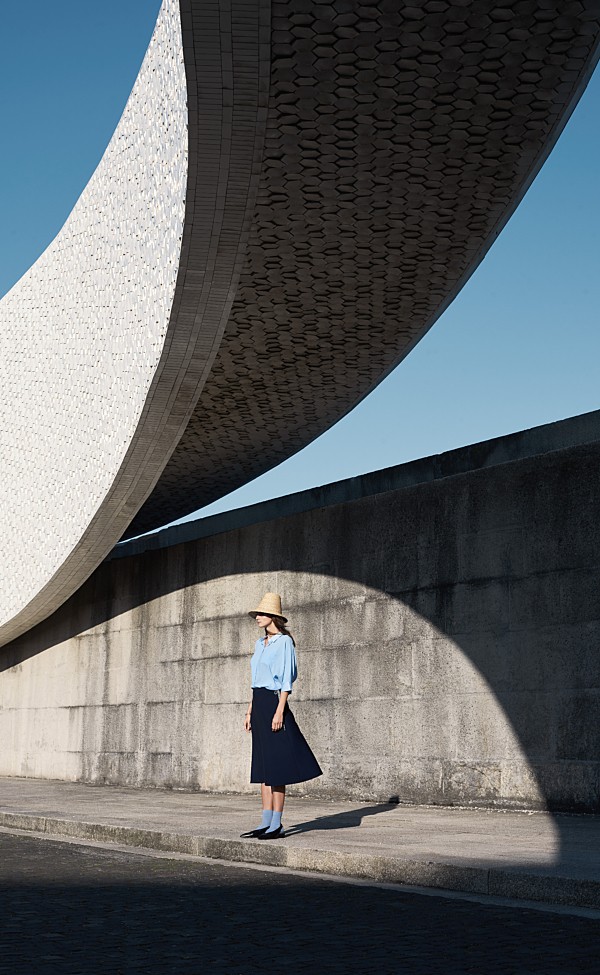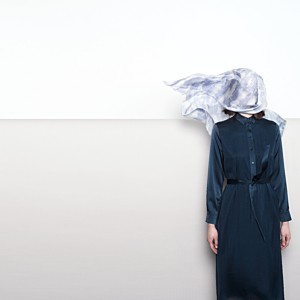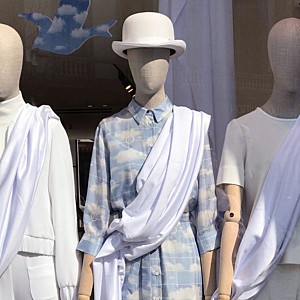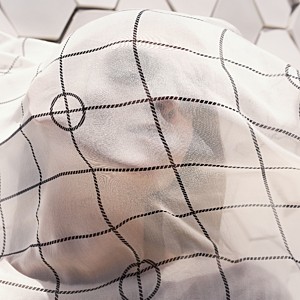How architecture inspires us
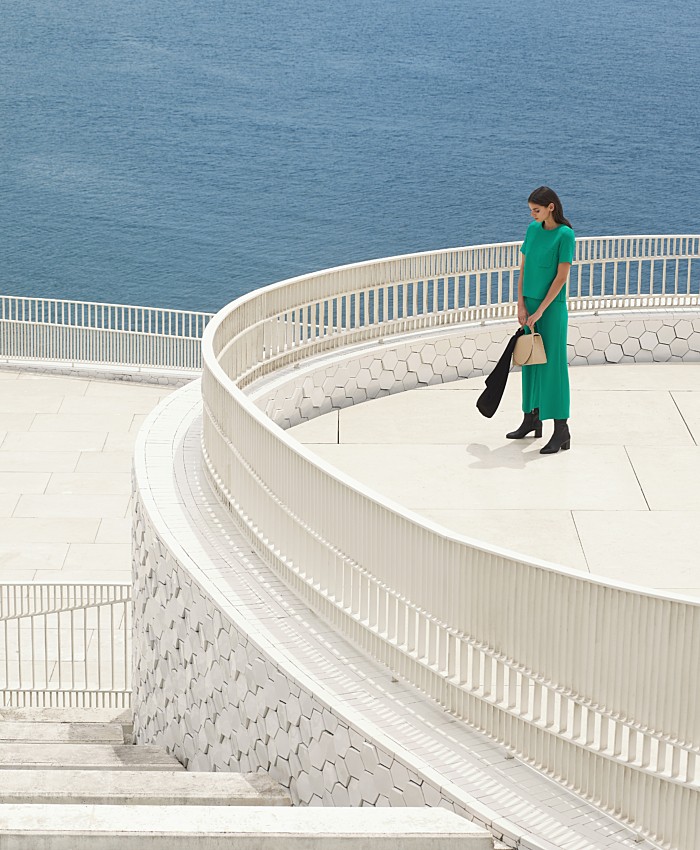
When designer Elke Baert looks at an architectural design, she tries to translate the characteristic shapes and the layering into a wearable, contemporary design. A specific element such as a collar, cutting line or seam can originate from the jointing of a stone wall, an asymmetrical roof or the implantation of the framework.
The finish is always aesthetically pleasing - with a focus on timeless elegance - but Furore also wishes to incorporate multi-functional elements into the designs, which offer opportunities for evolution. A nod to the concept of homes with sliding roofs and elements that shift the interior to the exterior. For example, Elke created a cape with a detachable hood and detachable sleeves for Edition Three, which can be easily transformed into a summer piece with an elegant waist belt. In addition, there are the culottes with detachable skirt and trousers that can be worn with or without a leather attachment piece.
Finally, the print is also inspired by architectural and urban influences. Typical of Furore is the rhombic texture, a cross effect of lines that are powerful and strong. Not only derived from the geometric shapes and lines specific to architecture, but also recognizable in our daily crossing of personalities while walking our own path. To our workplace, social visits or to places that offer us peace and diversion. Women on the move, as it were, who cross paths. Viewed from above, these individuals form a zigzag of lines, a game of traversing and meeting. The inspiration for the rhombic texture, timeless and challenging.
How architecture inspires us
In architecture, as well as fashion, there is an interaction
that is both functional and aesthetic.
In both architecture and fashion, the thought process behind a design often extends beyond the initial contemplation. A building completely erected in a uniform material, can display a diversity of color and texture according to the specific light in different angles. Implementing those gradations into a piece of clothing - in the form of a tone-on-tone color palette or a combination of contrasting fabrics like wool and cotton - is particularly captivating.
This diversification of textures is not only intertwined in the use of fabric, but also in the creation of layers. What stands out arouses interest. An example is the combination of a delicate, transparent fabric with textile that is characterized by a coarser texture and heaviness. A play of light and dark, transparency and solidity, superficiality and depth.
“Architecture is how a person places herself in a space. Fashion is about how you place the object on the person.” - Zaha Hadid, architect.
